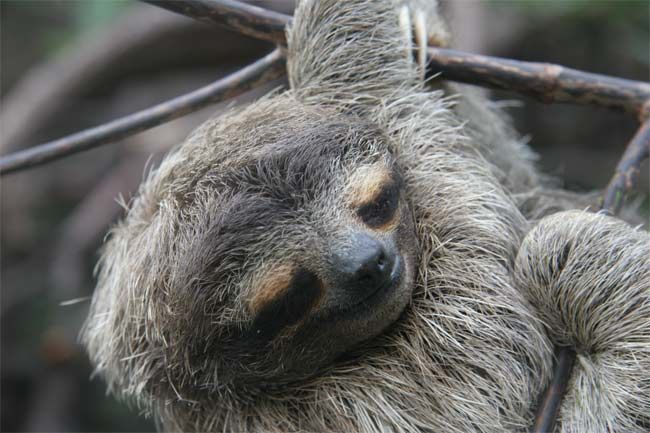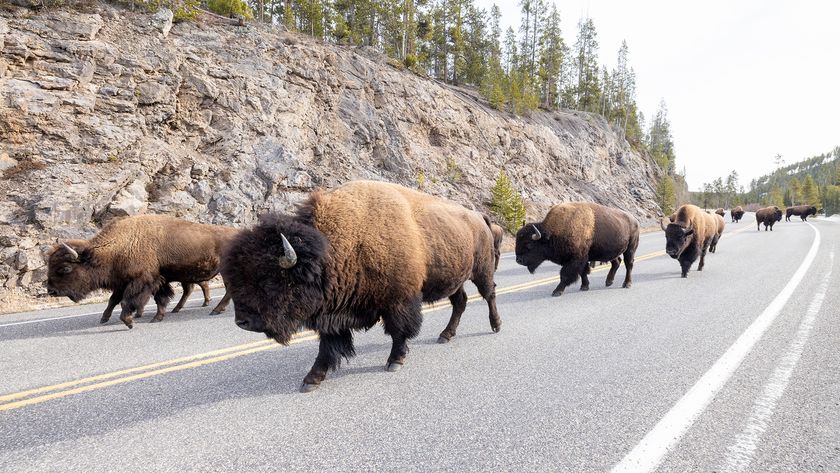Sloths are Not Total Sloths

Sloths are not as slothful as once thought.
In the first brain-wave study of any animal sleeping in the wild, scientists have discovered the three-toed sloth naps much less than commonly believed.
The three-toed sloth is a small furry mammal, about the size of a raccoon, that spends most of its life in treetops of tropical rain forests where it feeds on leaves and fruits. While sloths do epitomize sluggishness on many counts — digestion can take up to a month — slothful sleeping may not be one of these. Past estimates came from captive-animal studies.
"If animals behave differently in captivity — where all previous comparative studies were performed — than they do in the wild, measuring their brain activity in captivity can lead to the wrong conclusions," said lead researcher Niels Rattenborg of the Sleep and Flight Group at the Max Planck Institute for Ornithology.
The new results, detailed this week in the journal Biology Letters, are based on brown-throated three-toed sloths (Bradypus variegatus) lounging in the canopies of a rain forest at the Smithsonian Tropical Research Institute field station on Barro Colorado Island in Panama.
Rattenborg's team fitted three adult, female three-toed sloths with head caps equipped with brain sensors, as well as radio collars and accelerometers to give the animals' exact locations and movements. The research team monitored the gadgetized sloths for the next three to five days.
The female sloths slept an average of 9.6 hours a day, about six hours fewer than reported in captive sloths (and nearly two hours more than humans on average). The sloths tended to stay awake and feed during the first two-thirds of the night, finally sleeping during the remaining night hours. This nighttime pattern was also found in two additional sloths monitored for seven months.
Sign up for the Live Science daily newsletter now
Get the world’s most fascinating discoveries delivered straight to your inbox.
The researchers are not sure of the exact reasons for the differences in sloth siestas between wild and captive settings. They suggest ecological demands, such as keeping safe from predators and foraging, may limit the time available for sleep in the wild.
Captive sloths, on the other hand, don't have to stay alert for prowling cats or overhead hawks, and so they can sleep to their hearts' content.
Since wild sloths probably squeeze in just enough sleep to gain whatever benefits there are, the researchers say studies in the wild would provide clues as to why animals like us sleep.
The study was funded in part by the Max Planck Society.
- Video: Why Baby Dolphins Don't Sleep
- Top 10 Amazing Things You Didn't Know About Animals
- Do Fish Sleep?
Jeanna Bryner is managing editor of Scientific American. Previously she was editor in chief of Live Science and, prior to that, an editor at Scholastic's Science World magazine. Bryner has an English degree from Salisbury University, a master's degree in biogeochemistry and environmental sciences from the University of Maryland and a graduate science journalism degree from New York University. She has worked as a biologist in Florida, where she monitored wetlands and did field surveys for endangered species, including the gorgeous Florida Scrub Jay. She also received an ocean sciences journalism fellowship from the Woods Hole Oceanographic Institution. She is a firm believer that science is for everyone and that just about everything can be viewed through the lens of science.












